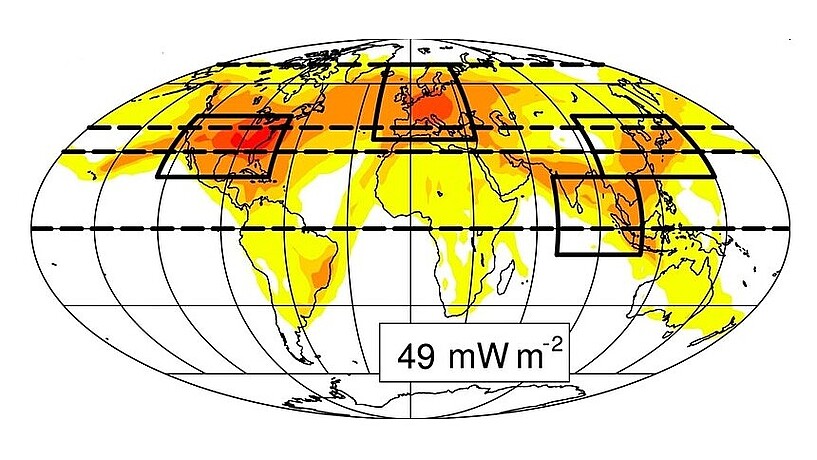Referentin: Dr. Ulrike Burkhardt , Institute of Atmospheric Physics, German Aerospace Center (DLR)
Formation and Climate Impact from Contrails
Today, air traffic is estimated to contribute between 3.5% and 5% to the anthropogenic forcing of climate change. Contrail cirrus, the cirrus clouds that form within the aircraft plume, account for the largest share of the aviation related forcing, larger than the forcing from aviation CO2 emissions.
Contrails form when the aircraft exhaust mixes with environmental air, and during this mixing the plume relative humidity increases so much that water saturation is exceeded. Contrail formation increases cirrus cloudiness and modifies the radiation budget of the earth. This change in the radiation budget can be estimated using climate models that include a representation of contrail cirrus processes. The impact of contrail cirrus on radiation is dependent on contrail cirrus optical properties and their life time or coverage. Properties and life times are controlled by microphysical processes such as ice formation, i.e. processes on the scale of a single ice crystal. Simulations can be compared to in-situ or remote sensing measurements and the sensitivity of simulated contrail cirrus properties and radiative forcing to emissions can be explored.
After receiving her doctorate in Physics in 1997 from the Ludwig-Maximilians-University in Munich, Ulrike Burkhardt moved first to the University of Reading (UK) and in 2003 to the Institute of Atmospheric Physics of the German Aerospace Centre (DLR) in Oberpfaffenhofen as a research fellow. Since 2006 her research has focussed on cirrus clouds, natural cirrus and contrail cirrus, and their representation within climate models or higher resolving models. She studies the climate impact of contrail cirrus and the impact of different mitigation options.
Organisation: RAeS Hamburg in cooperation with the DGLR, VDI, ZAL & HAW Hamburg
Wegen der Corona-Krise wird die Veranstaltung als Videovortrag erfolgen. Weitere Informationen hier.

